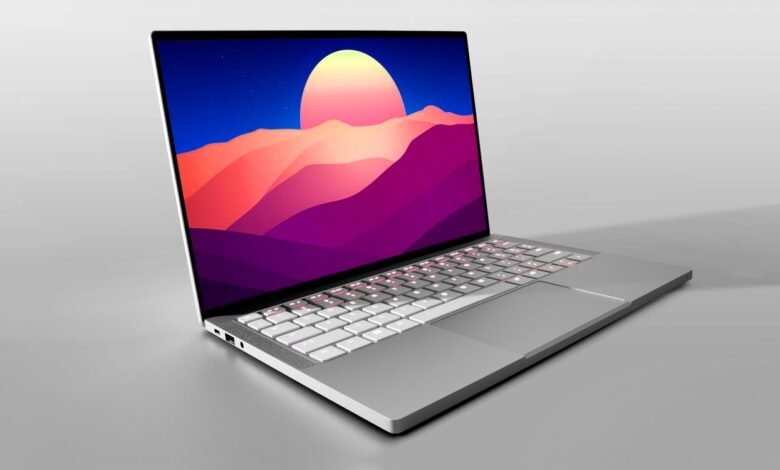
Although Razer laptops are generally designed for playing, we regularly recommend them to anyone looking for a MacBook-like design and build quality Windows laptop. The Razer Book 13 takes the Razer design, which we love, but overlooks (almost) the game environment, and aims instead for office and school use.
Not that with one of the game-centric Razer Blade laptops you could not open a tabletop. Earlier models of the Razer Blade Stealth were indeed similar to the Book 13. But with its 13.4-inch display and large 16:10 aspect ratio, fast mobile performance, and long battery life, this is even easier to use from home. However, like an Apple, even compared to other premium laptops it isn’t necessarily the best deal.
Related: 15 Best Budget laptops for Freelancers in 2021
Razer Book 13 Review 2021
Razer Book 13 is now available in three different configurations, beginning at $1,200, £1,200, and AU$2,200. The basic configuration has an elven-gen core i5 processor, built-in Iris Xe graphics, a memory of 8GB, and a 256GB PCIe SSD, which can be user-updated if you need more storage.
Razer Book 13 Specifications
| Price as reviewed | $1,600 |
|---|---|
| Display size/resolution | 13.4-inch 1,920×1,200 touch display |
| CPU | 2.8GHz Intel Core i7-1165G7 |
| Memory | 16GB 4266MHz LPDDR4X (onboard) |
| Graphics | 128MB Intel Iris Xe Graphics |
| Storage | 256GB SSD |
| Networking | 802.11ax wireless, Bluetooth 5.1 |
| Connections | Thunderbolt 4 USB-C (x2), USB-A (3.2 Gen 1), HDMI 2.0, 3.5mm audio jack, microSD card slot |
| Operating system | Windows 10 Home 64-bit (20H2) |
By comparison, the x360 14 HP Spectre is a premium penetrated 2-in-one display with a 13.5-inch OLED display, 16GB of memory, and 512GB SSD, and is approximately $1,600, while the Dell XPS 13,9310 is currently around $1,550 with a 512 GB storage and UHD touch display resolution. The top book 13 matches components of Dell, but it is $2,000. Does this improve the deal with HP and Dell? Yes, if the main component specs are purchased alone. But there are a few additional features in the Razer Book 13 that may worth extra money.
Gaming keyboard for your work laptop
The Book 13 has the same keyboard layout as the Blade Stealth 13 laptop, which is nearly totally good. The keyboard is comfortable and we enjoy it much more than the Dell XPS 13. However, it has small backpacks and entry keys which may require a period of adjustment. On the upper side, there’s an extended Shift Key on the right side, with the power button on the top right (the rest of the keys require 63 grams) and a 300 m delay so that the laptop does not get shut or sleep.
Related: How to Find Used HP Laptops According to Your Needs
You get per-key lighting and support for the Razer Chroma RGB software, beyond layout and feel. You can configure the light of each key, create your own lights, or only use one of a number of presets using the app. Synapse can also be used in key restoration or macro creation. You can use Hypershift to set up shortcuts to do things such as opening a particular application, controlling media, or triggering a mouse function.
Staying connected without hub
Since the laptop is a small and slim premium, you could expect to only find USB-C ports on the book 13, perhaps also a headphone jack. However, by including a full-size HDMI port, a microSD card slot, and a USB-A port, it backs this trend. It also has a 2 USB-C Thunderbolt 4 ports with a 3.5mm audio jack. Wireless access includes Wi-Fi 6 and Bluetooth 5.1.
The Book 13 has four speakers and it sounds good for a laptop of its size, unlike much its competition. It has a four-mic array to help gather voices for video chats more easily. Sadly, Razer has a 720p webcam still standard for laptops, including premium laptops. Book 13 has no privacy features to block the webcam or to mutate microphones, but it also has an IR cam to sign in with face recognition.
Related: Console Vs Laptop: Which’s Best for Gaming?
All the performance for productivity
We would recommend the middle of the road option we tested for the three configurations. The fastest Core i7 and 16GB RAM processors provide you with the fast performance for quite a while. It has outpaced the other 11th-generation Core i7 laptops we recently tested, including the similarly configured Dell XPS 13 9310. The Book 13 supports the company’s external Cores X GPU Box, a stand-alone graphical card unit that is capable of connecting to better game performance when you decide that you need more than your integrated game and content design graphics.
The laptop is part of Intel’s Evo platform and was co-engineered with Intel. It’s built to start quickly, wake up when you lift the deck, and keep up to date when you’re away. The long life of the battery is a must as well, and it lasted over 11 hours in our streaming video test. Moreover, it reloads fast.
You pay a premium for the Razer Book 13, as with the gaming laptops of the company. It’s not too much on paper and you get more pixels, RAMs, and Dell XPS 13 or x360 14 storage. So it’s not the best deal, but you get a good laptop. The $1,600 setup gives you a headroom for the future. And while there are a few handy features missing on competing laptops, they are made up of unique elements of their own.
Related: Laptop Buying Guide: What to Look Before Buying a Laptop?
Razer Book 13 System Configurations
| Razer Book 13 (late 2020) | Microsoft Windows 10 Home (64-bit); 2.8GHz Intel Core i7-1165G7; 16GB DDR4 SDRAM 4,267MHz; 128MB Intel Iris Xe graphics; 256GB SSD |
|---|---|
| Asus ZenBook Duo 14 UX482 | Microsoft Windows 10 Home (64-bit); 2.8GHz Intel Core i7-1165G7; 8GB DDR4 SDRAM 4,267MHz; 128MB Intel Iris Xe graphics; 512GB SSD |
| Lenovo Yoga 9i (14-inch) | Microsoft Windows 10 Home (64-bit); 3.0GHz Intel Core i7-1185G7; 16GB DDR4 SDRAM 4,267MHz; 128MB Intel Iris Xe graphics; 512GB SSD |
| Acer AP714-51T Porsche Design Acer Book RS | Microsoft Windows 10 Home (64-bit); 2.4GHz Intel Core i5-1135G7; 8GB DDR4 SDRAM 4,267MHz; 128MB Intel Iris Xe graphics; 512GB SSD |
| Dell XPS 13 9310 | Microsoft Windows 10 Pro (64-bit); 2.8GHz Intel Core i7-1165G7; 16GB DDR4 SDRAM 4,267MHz; 128MB Intel Iris Xe graphics; 512MB SSD |
| HP Envy x360 13 (2020) | Microsoft Windows 10 Home (64-bit); 2.3GHz; AMD Ryzen 5 4500U; 8GB DDR4 SDRAM 3,200MHz; 512MB Radeon graphics; 256GB SSD |












3 Comments